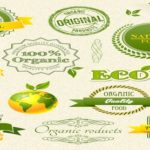When you go to Starbucks, do you recycle the lid or cup? I didn’t think so.
Despite a somewhat unmatchable brand loyalty in the coffee space, Starbucks still takes heat due to the potential negative environmental impact of its disposable cups.
Starbucks is now rising up and taking action to become more sustainable. Recently, they rolled out plastic cups for cold beverages that are produced with polypropylene cups and lids, and launching new lightweight plastic cups to reduce resin consumption. In addition, Starbucks has a goal of making 100% of its cups reusable or recyclable by 2015.

In an attempt to find a solution to this recycling issue, Starbucks has launched an in-store recycling program at selected stores.While the program has hit some hiccups along the way, the company said it is committed to eventually offering in-store recycling on a wide scale.
Currently, Starbucks is working with ConAgra Foods to make their coffee cups recyclable. What is preventing this from happening is the non-recylcable polymer adhered onto the inside of their cups to prevent leak.
Conagra Foods are different in that they use post-industrial recycled polylactic acid and convert it into shrink film packaging materials (i.e. the inside lining of Starbucks coffee cups). The company’s PLA shrink film contains more than 50% post-industrial recycled material, and it uses this material for tamper-evident seals on some of ConAgra Foods’ table spreads. However, the CEO of Conagra Foods still recognizes the limitation of PLA based bio-plastics and their researchers are working hard to make sure no plastic/contamination occurs within the cups with PLA shrink film adhered to them (i.e. increased thermal stability). Below is a quote that expresses the CEO’s concerns more thoroughly…
“We know there are challenges with PLA and how it can impact the bottle-to-bottle recycling strategy,” she said. “But we have strict restrictions on PLA and we make sure it doesn’t stay with the package because we don’t want potential contamination.”
By collaborating with its suppliers, Conagra has been able to convert 260,000 pounds of resin from non-renewable resources (PVC and PET g) to PLA (plastic derived from starch). It will be exciting to learn more about what Conagra can do for food companies to reduce their environmental waste and make their materials more sustainable.




Instead of trying to create more eco-friendly plastic, why doesn’t Starbucks just use mugs for crying out loud? Every single time I go there, they give me a paper cup–even if I’m not ‘taking out’!